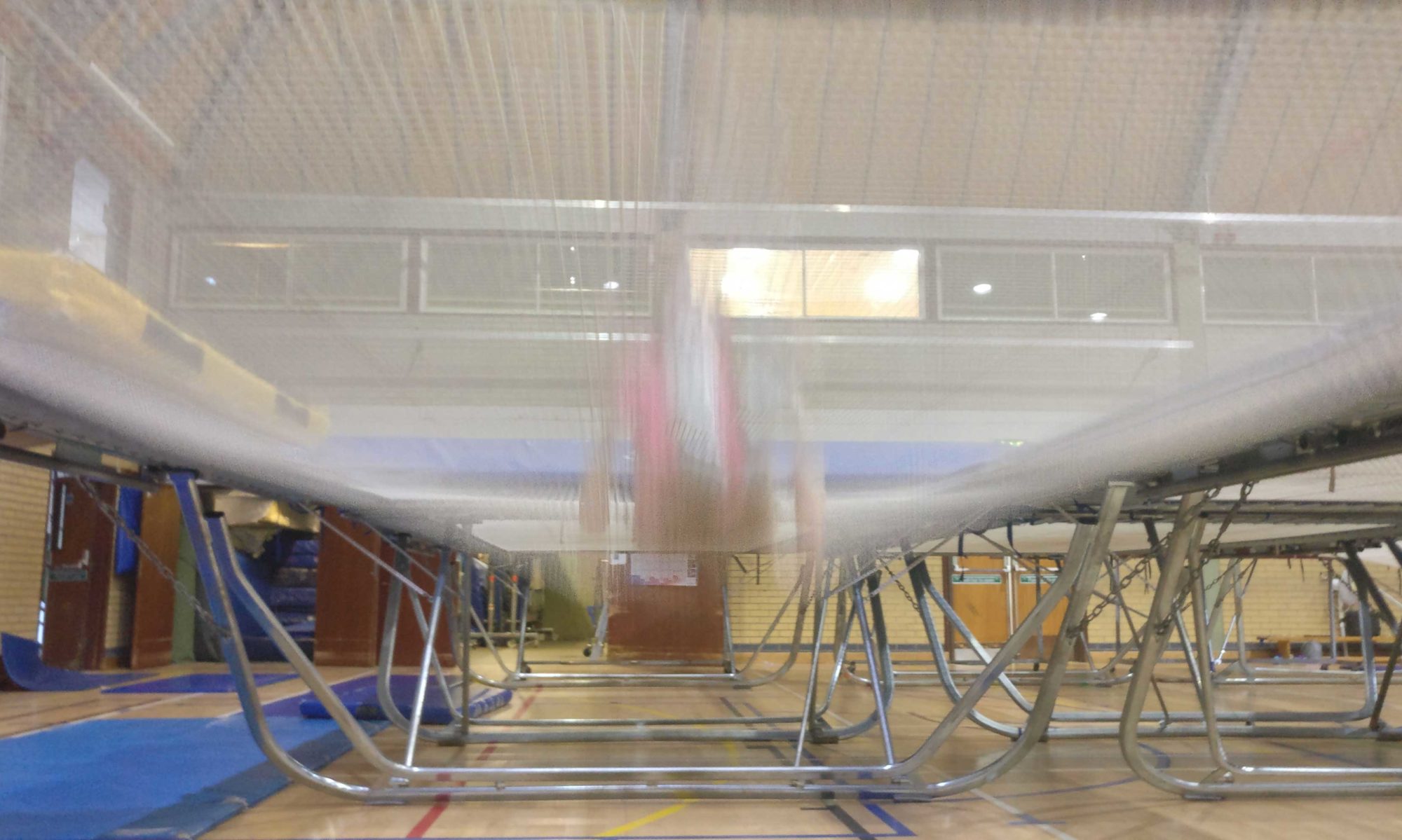Get with the beat
In this article I’d like to share an idea I have been working with for some time now. It has helped to produce dramatic improvements in the performance of trampolinists from beginners right up to Senior National Squad level.
Let me first describe the problem which needs addressing for it is indeed a common one. The gymnast performs a series of preparatory jumps in readiness for a routine or sequence of moves. The first skill in the sequence is seen to lose height compared to the preliminary jumps and the routine continues through a series of somersaults or jumps which vary greatly in their relative heights. This process is called “losing marks!” Apart from the obvious deductions for loss of height, the performer is putting themselves under pressure, resulting in a reduction in time available to perform each skill. Loss of control and breaks in form automatically follow. This inability to maintain height through a routine is directly or indirectly the cause of most form deductions at all levels of competition.
There are all kinds of technical and psychological reasons why height loss occurs but this publication does not have enough pages for me to enter into such detail. Readers might however find it rewarding to look up a number of my previous Gym Craft articles which do touch on the technical aspects of the problem. I want instead to offer a conceptual approach which amazingly can even over ride technical deficiencies at least in the short term.
Imagine the gymnast starting their routine with say, a half out or if you prefer, a tucked back somersault. The preliminary jumping goes well with appropriate height, posture and placement on the bed. The first skill fails to get close to the height of the last preliminary jump and the pattern of recovery and scramble has been set in motion for the rest of the routine. The following process has worked well for me.
JK Do you like listening to music?
GYMNAST Yes.
JK What kind of music do you like?
GYMNAST Heavy Metal (Improbably it could be Viennese Waltzes)
JK It’s got rhythm right? There is a definite beat?
GYMNAST Of course!
JK Imagine listening to the intro leading to one of your favourite tracks. The beat is being laid down and you are ready for the voice or the instrument to come in. Suddenly the singer starts ahead of the beat! Pretty bad eh?
GYMNAST Thinks — He’s right but what is the stupid old berk going on about?
JK As you jumped for that last routine I was going along with the beat you were laying down and then you suddenly started the first move ahead of the beat. Arrgh! Do you understand why that would offend my senses and those of anyone else watching?
GYMNAST Yeah, I get it.
JK Ok let’s do the preliminary jumps again and listen to the sound of the bed and feel the beat you are laying down. It starts quite quickly with the early low jumps but soon builds to a regular tempo as you balance yourself for the first move. Can you feel that?
GYMNAST Yes I can feel it.
JK As you make first contact with the bed say “Down” and as you feel the bed start to come up say “Up.” So we have “Down-Up, Down-Up, Down-Up etc.”
GYMNAST (Jumping) “Down-Up, Down-Up, Down-Up.”
JK This time when you reach your highest point in the air say “Top.” So now we have “Down-Up—-Top, Down-Up—-Top, Down-Up—-Top.” That is your rhythm which we’ll now try to carry into the first “note” in your routine.
That’s the end of the pantomime but I hope it illustrates the method and believe me there are a few top performers out there who will think that is a transcript of a dialogue they had with me.
The objective is of course to perform the first skill in the same rhythm as the preliminary jumps using the now familiar “Down-Up” tempo. Coaches should be aware however that the gymnast who naturally cuts height on the first skill in a routine, but who does manage to employ the process described, may become alarmed at the extra air time suddenly available! For this reason the method is not a “quick fix” but an effective way of getting the essential “ah ha” experience which can then be developed through painstaking repetition. It is likely that the push in mat will be needed to give reassurance during the new found air time but once the first skill starts to follow the metronomic rhythm of the preliminary jumps, the pattern can be developed through all subsequent moves in the routine.
I hope this little idea may prove helpful, but I must emphasise that it is indeed only a “little idea.” There is no substitute for technical excellence acquired through dedicated practice of the correct timing and movement patterns until they become second nature. Sometimes we just need a gimmick to set the process in motion.
© Jack Kelly

